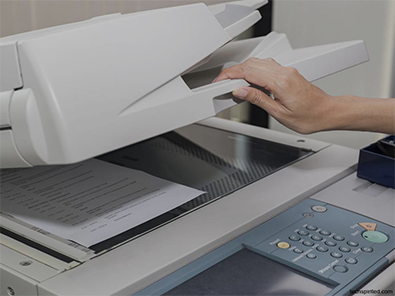Ideally suited to the small or home office the various Multifunctional Copiers that we have on the market today are becoming more and more advanced as time progresses. Years ago, we would need to purchase and maintain separate copier, fax machine, scanner and printer, at substantial cost. Replacing the working parts and consumables dictated that the initial setup of such an operation was beyond most small enterprises.
Now though we have a range of very effective and professional quality multifunction photocopiers, some that are actually desktop all-in-one machines. One single machine with one single set of consumables can print, copy, scan, fax, and all to a professional standard that would be accepted by any corporate giant. In fact these machines can be so small and effective that may corporate environments will position a multifunctional copier at various work stations throughout the office area, enabling all staff and departments to configure their personal machines to suit there own individual needs.
Like any other piece of technology you may be considering, it is important to search for the equipment that is going to achieve the job you want it to achieve and to the standards you need. When considering a multifunction photocopier, you might want to consider things like copy speed, cost and frequency of replacing consumables, and also various resolution capabilities for scanning, printing and faxing. Obviously speed is a crucial element with any of these functions. You don’t want to spend money on a office machine that is going to increase the cost of producing the work. Production costs can soar when you have staff standing around waiting for a job to finish, when they could be doing something much more productive.
A faster speed allows a tasks to be completed quicker, to the same standard, and although a faster machine will generally cost more than a slower one, the cost will be recouped in increased production savings.
Machine memory is something else you may want to seriously consider. With an industry standard entry level of 16MB of onboard memory now accepted, it makes little sense investing in a multifunction copier that only has half that amount, unless of course you are operating a one person small business from home. Larger corporations with many machine users, and larger documents, should always look to the higher memory machines for best results.
Also consider the maximum optimum dpi rating for the multifunction copier. The higher the dpi, the higher the cost, but the more superior your finished results will be. Obviously the larger the dpi capacity, the clearly and sharper your documents and work will be, making it easier to see detail and truly appreciate the standard of work. This would be particularly important in the case of photocopying plans, images, and other graphical material.
In the case of the inbuilt faxing capabilities you should check and establish the modem speed of the multifunction copier you are considering. Understanding the industry standard at the time of purchase, weigh this up with the frequency to which you will need to use the fax machine, and assess if this speed is going to be adequate for you. Remember too that generally speaking a faxing will cost more in phone charges to send, the longer it takes to send it. If you are sending one hundred faxes a week, this cost could mount considerably if you have a slow inbuilt modem speed.
Generally speaking a multifunctional copier, or all in one desktop machines are flexible, user friendly and offer professional standards. Suited to many environments both small and large, and portable enough to be moved as and when necessary. Individual customization of each machine allows more flexibility for separate departments, as opposed to all departments converging on one larger centrally positioned photocopier.


